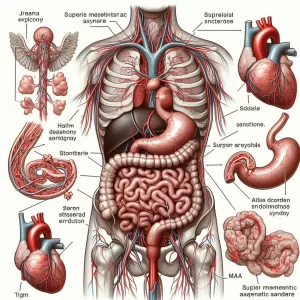Weight Loss Operation
The new product is a great addition to our lineup.
Our latest product is an exciting addition to our already impressive lineup! With its innovative features and sleek design, it's sure to be a hit with customers. Don't miss out on this amazing opportunity to upgrade your life!
What is a Weight Loss Operation?
Weight loss surgery, also known as bariatric surgery, is a surgical procedure designed to help individuals with severe obesity lose weight. This type of surgery is performed by changing the anatomy of the gastrointestinal (GI) tract to limit the amount of food that can be eaten and/or absorbed. It is best suited for individuals with a body mass index (BMI) of 40 or greater and a number of other factors determine whether a person qualifies for the procedure.
There are several different types of weight loss operations, and the most popular include Roux-en-Y gastric bypass (RYGB) and sleeve gastrectomy (SG). These two surgeries are the most studied weight loss surgeries and have proven to be quite effective for long-term weight loss.
Risks and Benefits of Weight Loss Operations
Weight loss surgery is a major decision and there are risks and benefits to consider.
Risks of Weight Loss Operations
The most common risks and complications associated with weight loss operations include malnutrition, ulcers, infection, poor wound healing, hernia formation, and gall stones. There is also a risk of cardiopulmonary complications resulting from anesthesia and long-term nutritional deficiencies.
Benefits of Weight Loss Operations
The potential benefits of weight loss operations include improved overall health and well-being, lowered cholesterol, improved control of diabetes, and reduced risk of cardiovascular disease. It also improves quality of life and increases life expectancy.
Types of Weight Loss Operations
Gastric Bypass Surgery (RYGB)
Gastric bypass surgery is the most common of all weight loss operations. This procedure involves creating a size-reducing pouch in the stomach. Food passes through this pouch and then directly into the middle part of the small intestine, bypassing the rest of the stomach and the duodenum.
Sleeve Gastrectomy (SG)
Sleeve gastrectomy is a restrictive procedure in which about 75-80 percent of the stomach is removed. This procedure limits the amount of food that can be consumed, resulting in a feeling of fullness after only a small amount of food.
Gastric Banding Surgery
Gastric banding surgery involves surgically placing an adjustable band around the stomach to create a small pouch above the band. This pouch restricts the amount of food that can be eaten and slows the emptying of the stomach, resulting in a feeling of fullness after only a small amount of food.
Qualifying for Weight Loss Surgery
The criteria for determining whether or not a patient qualifies for weight loss operations vary from surgeon to surgeon. It is important to discuss your weight loss goals and desired outcome with your physician and discuss any medical conditions you have that may influence the decision. Generally, to qualify for weight loss surgery, a patient must have:
- A BMI of 40 or greater, or a BMI of 35 or greater with at least one comorbidity, such as type 2 diabetes, sleep apnea, or hypertension
- A documented history of diet, exercise, and lifestyle changes that have failed to produce a significant reduction in weight
- A understanding of the long-term lifestyle changes required for long-term success
- Commitment to attending all necessary medical appointments related to the surgery
- No active medical issues that would put them at an increased risk for surgery
Post-Op Guidelines for Weight Loss Operations
For those who qualify and are successful in losing weight, it is important to follow some basic post-operative guidelines to ensure long-term success. These include:
- Commit to lifelong healthy eating and fitness habits.
- Follow your surgeon’s and dietitian’s recommendations for proper nutrition and physical activity.
- Participate in follow-up visits with your surgeon.
- Take vitamins and supplements as instructed.
- Stay hydrated.
Weight Loss Operation Results
Weight loss operations have been found to be very effective for individuals seeking to lose a large amount of weight. In general, people can expect to lose 60-70 percent of their excess weight. However, results vary widely and individuals must adhere to a healthy lifestyle to maintain their results.
Gastric Bypass vs. Sleeve Gastrectomy
Gastric bypass and sleeve gastrectomy are both considered effective and safe weight loss operations. Both have advantages and disadvantages, but it is important to discuss which is best for you with your physician.
Gastric Bypass (RYGB)
Advantages:
- Weight loss can occur quickly and the patient can expect to lose 60-70% of their excess weight.
- Low risk of failure, meaning the weight loss is maintained in the long term.
- Reduced risk of developing nutritional deficiencies.
Disadvantages:
- Surgical risks are higher than with other weight loss operations.
- The procedure is more complicated and requires more work from the surgeon.
- Higher risk of long-term complications, including stomach ulcers and hernias.
Sleeve Gastrectomy (SG)
Advantages:
- The procedure is less complicated and requires less surgical work than gastric bypass.
- It is reversible and can be easily adjusted if needed.
- The risk of long-term complications is lower than with gastric bypass.
Disadvantages:
- Weight loss occurs more slowly compared to gastric bypass.
- It has a higher failure rate, meaning some patients cannot keep the lost weight off.
- There is an increased risk of nutritional deficiencies.
Summary
Weight loss surgery, or bariatric surgery, is a surgical procedure designed to help individuals with severe obesity lose weight. This type of surgery is performed by changing the anatomy of the gastrointestinal tract to limit the amount of food that can be eaten and/or absorbed. The two most popular types are gastric bypass and sleeve gastrectomy.
To qualify for weight loss surgery, a patient must have a BMI of 40 or greater or a BMI of 35 or greater with at least one comorbidity. The procedure carries some risks and it is important to discuss these with your physician prior to having the surgery.
Weight loss operations have been found to be very effective for individuals seeking to lose a large amount of weight, and people can expect to lose 60-70 percent of their excess weight. However, results vary widely and individuals must adhere to a healthy lifestyle to maintain their results. Gastric bypass and sleeve gastrectomy both have advantages and disadvantages, so it is important to discuss which is best for you with your physician.
Finally, those who have had weight loss surgery must commit to lifelong, healthy eating and fitness habits as well as follow their surgeon’s and dietitian’s recommendations for proper nutrition and physical activity. Taking vitamins and supplements as instructed is important and staying hydrated is essential for long-term success.
Definition and Overview
A weight loss operation, which is also referred to as weight loss or bariatric surgery, is a sensitive medical procedure that aims to treat people who are suffering from potentially life-threatening obesity. Although it can lead to dramatic weight loss, it is not recommended for cosmetic reasons alone as it comes with serious risks and complications. The procedure works by limiting the body’s ability to take a significant amount of food by removing a part of the stomach. This is usually used as a last resort if the patient fails to lose weight through other non-surgical and less invasive means.
Who Should Undergo and Expected Results
Patients must meet the following criteria to be considered for any type of weight loss operation;
- Have a BMI or body mass index of 40 or higher. For women, this means that they should be about 80 pounds overweight while men should be about 100 pounds overweight.
- Have a serious health problem associated with their obesity such as high blood pressure, diabetes, gout, and breathing problems, among others.
- Have tried other ways to lose weight and has failed
- Are committed to drastic lifestyle changes following the surgery (eating a healthy diet, doing regular exercises, etc.
- Know and understand the risks of the surgery
How Does the Procedure Work?
There are different types of weight loss operations and each is performed using different techniques. The main types of operations are divided into three main approaches:
Restrictive surgery – As implied by the term, this form of weight loss surgery aims to restrict the body’s ability to take in a specific amount of food; this is achieved by shrinking the size of the stomach. This limits the amount of food that the patient can consume from a normal rate of 3 pints to as little as 2 or 3 ounces. This surgery also effectively slows down a person’s digestion to lengthen the feeling of being full.
Malabsorptive surgery – This form of weight loss surgery aims to change the way the body takes in food. Like restrictive surgery, malabsorptive surgery also shrinks the size of the stomach. However, it also removes or bypasses a certain part of the digestive tract. This does not only limit the amount of food consumed but also limits the body’s ability to absorb calories. This type of operation is also called an intestinal bypass.
Electrical device implantation – This is a relatively new technique that works by interrupting the nerve signals running from the stomach going to the brain. The electric pulses help suppress hunger.
The different types of surgeries are:
Gastric bypass surgery – Gastric bypass is the most common type of weight loss operation that combines the restrictive and malabsorptive techniques. The idea is to create a shortcut leading from the upper region of the stomach to the lower section of the intestines, completely bypassing a part of the stomach and the small intestine. This restricts the body from absorbing too many nutrients from food, leading to a dramatic weight loss.
Adjustable gastric banding – This is a specific weight loss surgery that uses the restrictive technique. It works by placing an inflatable band that squeezes the stomach into a smaller pouch, forcing the patient to consume significantly less food. This is a commonly preferred method of surgical weight loss because of its smaller scarring, faster recovery, and the fact that it can be reversed; even if the band is already in place, patients can have it adjusted or even removed in the future if they decide to change their minds. The weight loss, however, is not that dramatic, and there is also the risk of the band slipping out of place or leaking.
Sleeve gastrectomy – Also a restrictive surgery, sleeve gastrectomy is the surgical removal of about 75 percent of the patient’s stomach. The remainder is simply a narrow tube connected to the intestines. In some cases, it works by itself, but in others, it is followed by other surgeries after 12 to 18 months. This is, however, a simple and low-risk surgery that is an excellent choice for patients who are severely obese or are suffering from a major health condition that makes other surgeries very risky. The good thing about this surgery is that, since the intestines are not affected, the body can still absorb the optimum level of nutrients.
Possible Complications and Risks
All surgeries have risks, but these differ based on the specific type of weight loss operation a patient undergoes. Malabsorptive surgeries are known to cause numerous side effects, so doctors do not widely recommend them. Gastric banding, on the other hand, is also a risky procedure, as it can cause vomiting if a patient eats too much too fast; patients also sometimes require a secondary operation to repair a band that has slipped out of place or become loose. In addition, all types of weight loss operations also come with a risk of infection and blood clots.
References:
- Lamond KG, Lidor AO. Morbid obesity. In: Cameron JL, Cameron AM, eds. Current Surgical Therapy. 11th ed. Philadelphia, PA: 2014.
- Mechanick JI, Youdim A, Jones DB, et al. Clinical practice guidelines for the perioperative nutritional, metabolic, and nonsurgical support of the bariatric surgery patient – 2013 update: cosponsored by American Association of Clinical Endocrinologists, The Obesity Society, and American Society for Metabolic and Bariatric Surgery. Endocr Pract. 2013;19:337-372. PMID 23529351 www.ncbi.nlm.nih.gov/pubmed/23529351.
/trp_language]
2 Comments
Leave a Reply
Popular Articles








I’m considering it.
KaneJordan: I’ve heard good things
#AmazingLifeChange
Good luck!